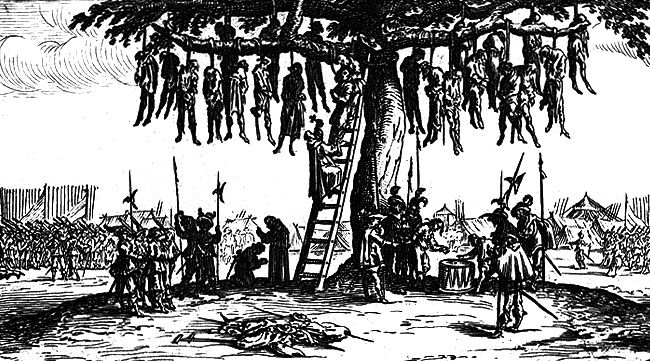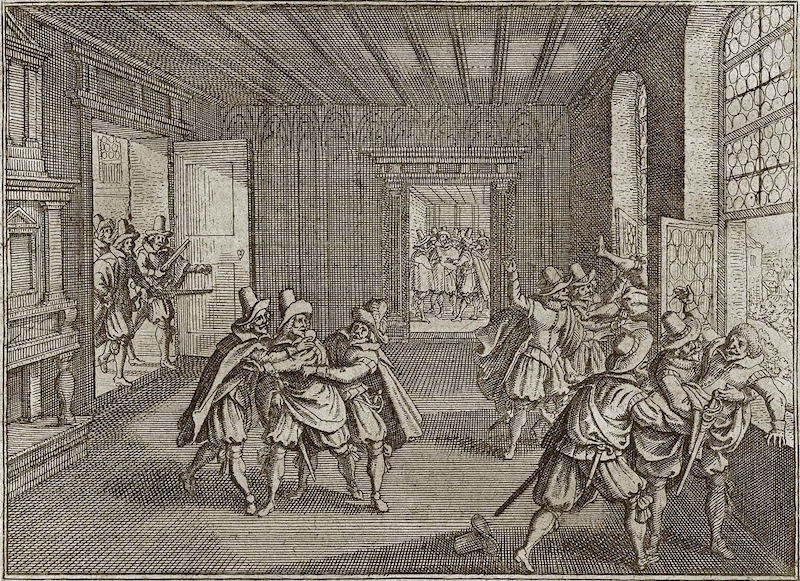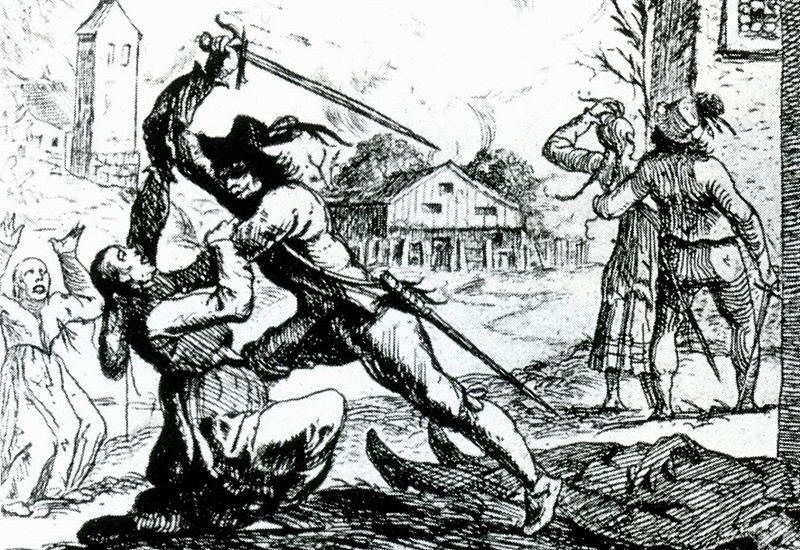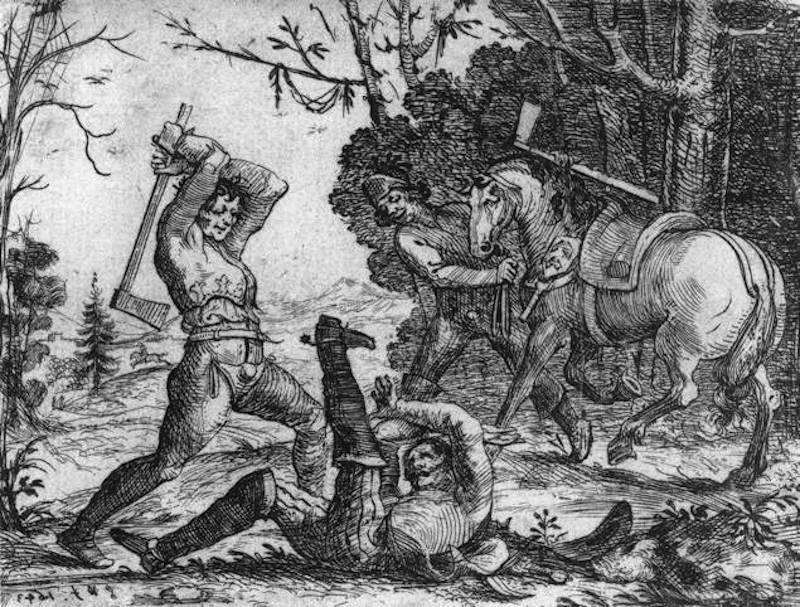Hol Dir den wöchentlichen SPARTANAT-Newsletter.
Dein Bonus: das gratis E-Book von SPARTANAT.
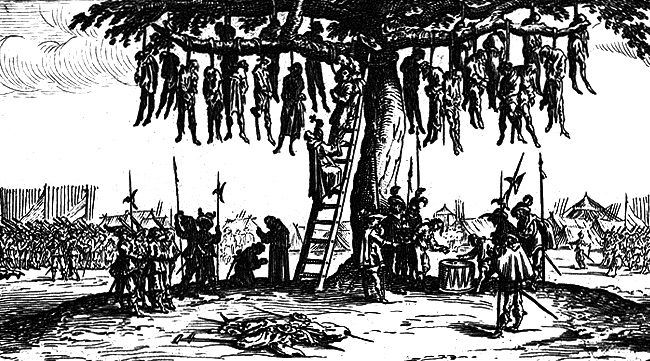
Martin van Creveld: Ein neuer Dreißigjähriger Krieg?
Diesen Artikel von Martin van Creveld haben wir 2015 hier auf SPARTANAT veröffentlicht. Aus gegebenem Anlass bringen wir ihn nochmals neu: Syrien, der Irak und der Islamische Staat (IS) im Krieg, schon längst spielt auch alle Welt – USA, Russland, Frankreich, Großbritannien – in der Region des Nahen Ostens mit.
Diesen Artikel von Martin van Creveld haben wir 2015 hier auf SPARTANAT veröffentlicht. Aus gegebenem Anlass bringen wir ihn nochmals neu: Syrien, der Irak und der Islamische Staat (IS) im Krieg, schon längst spielt auch alle Welt – USA, Russland, Frankreich, Großbritannien – in der Region des Nahen Ostens mit. Und die Entwicklung scheint immer schneller und weiter zu eskalieren. Martin van Creveld, einer der weltweit führenden Militärhistoriker, beschreibt auf SPARTANAT den Anfang eines wahrscheinlich lange anhaltenden und weitreichenden Konfliktes:
Für alle von euch, die es vergessen haben, hier eine kurze Zusammenfassung: Der Dreißigjährige Krieg begann im Mai 1618 als protestantische Fürsten Böhmens gegen den katholischen Kaiser Ferdinand II. revoltierten. Sie warfen seine Gesandten aus den Fenstern eines Palastes in Prag. Zu ihrem Glück fielen sie in einen Graben, der mit Abfall gefüllt war, und niemand kam zu Tode.
Wäre der Aufstand lokal begrenzt geblieben, man hätte ihn wohl ziemlich schnell niedergeschlagen. So, wie es 1620 tatsächlich war, als die Habsburger und ihre Verbündeten die Schlacht vom Weißen Berg gewonnen haben. Aber stattdessen wuchs und wuchs er. Zuerst wurden die Ungarn und die Ottomanen hineingezogen (wobei die aber nicht lange mitgemacht haben). Dann kamen die Spanier, dann die Dänen, dann die Schweden, letztendlich die Franzosen. Manche engagierten sich mehr, andere weniger. Viele Kleinstaaten, Städte und mehr oder weniger unabhängige Raubritter engagierten ihre eigenen Milizen und machten mit bei etwas, das sich in ein wildes Jeder-gegen-jeden entwickelte. Über drei Jahrzehnte haben sich Armeen und Milizen gegenseitig durch Mitteleuropa gejagt. Rauben, niederbrennen, vergewaltigen, töten. Als der Westfälische Friede die Feindseligkeiten 1648 beendete, war die Bevölkerung Deutschlands um ein geschätztes Drittel reduziert worden.
Die Ähnlichkeiten des Dreißigjährigen Krieges mit dem gegenwärtigen Krieg in Syrien sind offensichtlich und beunruhigend. Auch dieser begann mit einer Revolte gegen einen repressiven Herrscher und sein Regime.
Die Ähnlichkeiten mit dem gegenwärtigen Krieg in Syrien sind offensichtlich und beunruhigend. Auch dieser Krieg begann mit einer Revolte gegen einen unterdrückenden Herrscher und sein Regime. Einer der, wie grauslich er auch sein konnte, in allen Fällen alles mehr oder weniger unter Kontrolle hatte. Zuerst waren nur verschiedene „demokratische“ syrische Fraktionen – vorausgesetzt, dass es so etwas überhaupt gibt – betroffen, die versucht haben, Bashir Assad zu stürzen. Als nächstes stellte es sich jedoch heraus, dass manche dieser Gruppen nicht demokratisch, sondern islamisch waren, Teil einer viel größeren Bewegung, die eigentlich aus dem Irak stammte und dort unter Kurzbezeichnungen wie IS oder Daesch bekannt war. Des weiteren wurde die Hisbollah – sie ist im gewissen Sinn ein verlängerter Arm Assads und des Irans, von beiden wurde sie gegen Israel unterstützt – in den Konflikt hinein gezogen. Die Hisbollah hat die Kämpfer gestellt, die anderen Ausbildner und Waffen.
Und das war erst der Anfang. Die Kurden, deren Territorium sich auch auf Syrien und Irak erstreckt, haben nun Blut gerochen, sie versuchen die Chance zu nutzen, um sich die Unabhängigkeit zu holen. Das zieht notwendigerweise die Türken mit hinein. Nur so können diese verhindern, dass ihre eigenen Kurden sich ihren Brüdern anschließen. Ankara hat angefangen diese zu bombardieren. Um Obama zufriedenzustellen haben sie auch ein paar wenige Bomben auf den IS fallen lassen. Die USA ihrerseits haben begonnen, einige von den „liberalen“ Milizen zu trainieren, ohne jeden Nutzen. Die US Ausbildner haben es dabei in Syrien nicht besser gemacht als ihre Vorgänger es in Vietnam, im Libanon, in Afghanistan und Irak taten. Was daran erstaunlich bleibt, ist dass sie und ihre Chefs im Weißen Haus niemals dazulernen.
Bei so vielen Interessen, die involviert sind – eigene und fremde – , scheint ein Ausweg nicht in Sicht. Auch der Ausgang kann in keinster Weise vorhergesehen werden, ebenso wenig wie einst beim beginnenden Dreißigjährigen Krieg.
Als nächstes stürzten sich die Vereinigten Staaten selbst ins Getümmel. Stets in Angst vor Verlusten, daher mit einer zunehmenden Anzahl an Drohnenschlägen, die aber mehr oder weniger nutzlos sind. Die Russen, fest dazu entschlossen ihre letzte verbleibende Basis außerhalb ihres eigenen Landes nicht zu verlieren und Assad gleichzeitig an der Macht zu halten, fingen an mit Luftschlägen gegen einige, aber nicht alle Milizen. Die Franzosen, nur Gott weiß was sie damit erreichen wollten, taten das gleiche. (Anm der Red.: Bereits vor den letzten Attentaten in Paris.) Zusätzliche angefeuert wird der Konflikt von den Saudis, die sich einfach gegen alles stellen, was die Unterstützung der Iraner hat. Zu feig, um ihre eigene nutzlose Armee einzusetzen, versuchen sie Assad los zu werden, indem sie seine Feinde massiv unterstützen.
Bei so vielen Interessen, die involviert sind – eigene und fremde – , scheint ein Ausweg nicht in Sicht. Auch der Ausgang kann in keinster Weise vorhergesehen werden, ebenso wenig wie beim Dreißigjährigen Krieg vier Jahre nach seinem Anfang, im Jahr 1622. Tatsächlich gibt es gute Gründe zu glauben, dass der Konflikt gerade erst begonnen hat. Zusätzliche Mitspieler wie Libanon und Jordanien können durchaus noch mit hinein gezogen werden. Das würde – so gut wie sicher – Israel dazu kommen lassen. Einige Israelis von rechten Flügel, inklusive ein paar Minister, träumen sogar von solch einem Szenario. Sie hoffen, dass der Fall der Haschemitendynastie und Zerfall Jordaniens ihnen die Gelegenheit verschafft, die Ereignisse von 1948 zu wiederholen und damit die Palästinenser aus der West Bank zu werfen und nach Jordanien zu vertreiben.
So wie es jetzt ausschaut, werden die größten Verlierer Syrien und Irak heißen. Das Hauptopfer wird – wie auch schon 1618-1648 – die Zivilbevölkerung sein.
Das allerdings ist noch Zukunftsmusik, wie man in Deutschland sagt. So wie es jetzt ausschaut, werden die größten Verlierer Syrien und Irak heißen. Bereits jetzt existieren sie nicht mehr als organisierte Entitäten, noch scheinen sie als gemeinsames Ganzes irgendeine Zukunft zu haben. Der größte Gewinner wird der Iran sein. Die Mullahs können jene Rolle spielen, die einst Richelieu inne hatte, der große französische Staatsmann des 17. Jahrhunderts. Sie überblicken die ganze Region vom persischen Golf bis Latakia am östlichen Mittelmeer, wie sie sich in einen Strudel aus konkurrierenden Interessen verwandelt, mit denen sie spielen können. Und es reut sie auch nicht zu sehen, wie sich die Türken und die Kurden wegen ihrer jeweiligen Herzensangelegenheiten gegenseitig umbringen.
Das Hauptopfer wird – wie auch schon 1618-1648 – die Zivilbevölkerung sein. So wie im Dreißigjährige Krieg werden die Menschen bestohlen, ausgeraubt und getötet. Wie bereits 1618-48 erlebt der Sklavenhandel – insbesondere von heiratsfähigen Frauen, die man vergewaltigen kann, aber auch von jungen Männern, die eingezogen werden können – eine neue Blüte. Und das nicht nur in Syrien, sondern auch im Irak, wo der IS einerseits die lokalen Kurden bekämpft und andererseits jene bunt zusammengewürfelten Einheiten, die die „irakische“ Armee noch ins Feld bringen kann. Daher wird die Zahl der Flüchtlinge, die dem entkommen will, in die Millionen gehen. Viele, die nichts mehr zu verlieren haben, werden ihr Leben riskieren und um jeden Preis versuchen nach Europa zu kommen. Gemeinsam mit einigen aus Libyen und anderen aus Afrika werden manche von ihnen sich dort den Salafisten anschließen, einer extremen muslimischen Sekte, die in den Städten des Kontinents bereits sehr aktiv ist. Manche von diesen wiederum werden sich zu Terroristen entwickeln. Terrorismus, der nicht unter Kontrolle gebracht werden kann, wird seine Antwort nicht nur im Extremismus, im Verlust an Bürgerrechten und im Niedergang der Demokratie – was bereits alles passiert – finden, sondern im Terrorismus.
Und wem werden alle die Schuld geben? Israel, natürlich. Aber das sind wir Israelis und Juden ja längst gewöhnt …
 MARTIN VAN CREVELD, einer der führenden Militärhistoriker der Gegenwart, wurde 1946 in Holland geboren. Seit 1950 lebt er in Israel. Er studierte an der London School of Economics und an der Hebrew University in Jerusalem, wo er seit 1971 als Professor für Geschichte lehrt. Bücher u.a.: „Kampfkraft“, „Gesichter des Krieges“, „The Sword and the Olive“, „Aufgang und Untergang des Staates“,… Darüber hinaus ist er als militärischer Berater und Referent in der gesamten westlichen Welt tätig.
MARTIN VAN CREVELD, einer der führenden Militärhistoriker der Gegenwart, wurde 1946 in Holland geboren. Seit 1950 lebt er in Israel. Er studierte an der London School of Economics und an der Hebrew University in Jerusalem, wo er seit 1971 als Professor für Geschichte lehrt. Bücher u.a.: „Kampfkraft“, „Gesichter des Krieges“, „The Sword and the Olive“, „Aufgang und Untergang des Staates“,… Darüber hinaus ist er als militärischer Berater und Referent in der gesamten westlichen Welt tätig.
Martin van Creveld im Internet: www.martin-van-creveld.com
Alle Abbildungen zeigen zeitgenössische Szenen aus dem Dreißigjährigen Krieg (1618-1648)
SPARTANAT ist das Online-Magazin für Military News, Tactical Life, Gear & Reviews.
Schickt uns eure News: [email protected]
Werbung
Hol Dir den wöchentlichen SPARTANAT-Newsletter.
Dein Bonus: das gratis E-Book von SPARTANAT.

